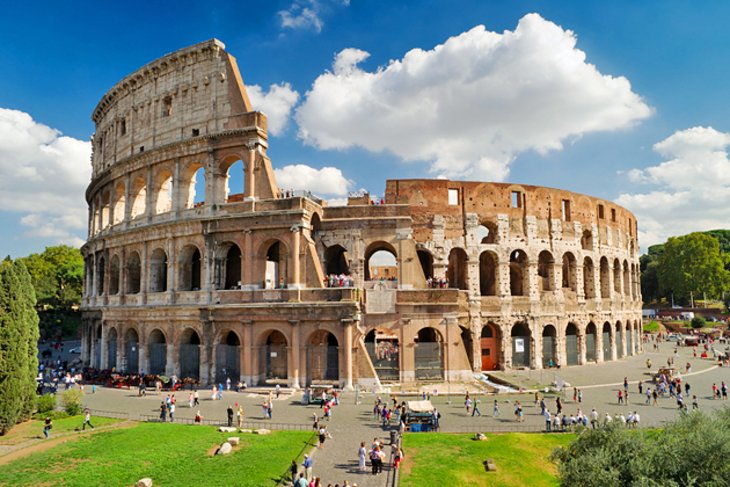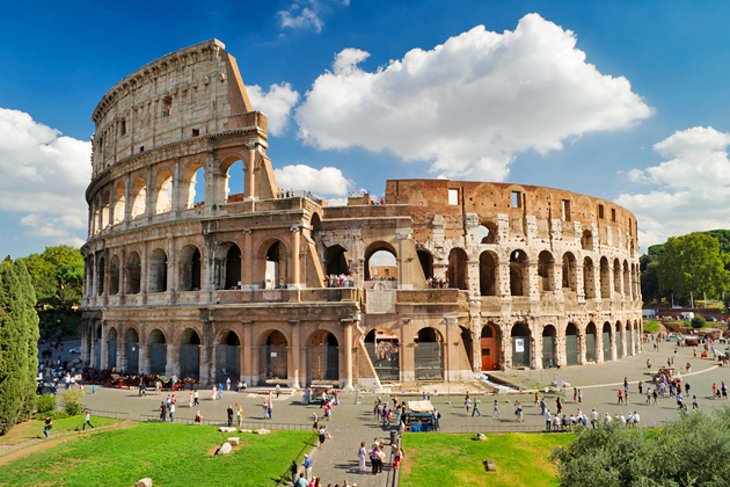
Italy, a land steeped in millennia of history, a canvas painted with artistic masterpieces, and a haven for epicurean adventures, beckons travelers with an irresistible allure. From the crumbling grandeur of ancient ruins to the vibrant pulse of modern cities, Italy offers an unparalleled tapestry of experiences. This comprehensive guide delves into the country’s most iconic attractions, its rich historical tapestry, practical travel tips, diverse accommodation options, seamless transportation networks, and the optimal times to embark on your Italian odyssey.
The Crown Jewels: Italy’s Unmissable Attractions
Italy’s treasures are as diverse as its landscapes, each offering a unique window into its soul.
Related Articles about A Symphony of History, Art, and Culinary Delights: Unveiling Italy’s Top Attractions:
- Vancouver: A Symphony of Nature and Urbanity – Your Ultimate Guide to the Emerald City
- Cape Town’s Crown Jewels: A Guide to the City’s Finest Hotels and Unforgettable Experiences
- Krabi: A Tropical Paradise Unveiled – Your Ultimate Guide
- Hanoi: A Journey Through Time and Taste
- Germany: A Tapestry of History, Culture, and Unforgettable Adventures
-
Rome: The Eternal City’s Grandeur: No journey to Italy is complete without immersing oneself in the historical heart of Rome. The Colosseum, a colossal amphitheater, whispers tales of gladiatorial combat and imperial power. Adjacent, the Roman Forum, once the bustling center of Roman life, invites exploration of its ancient temples, basilicas, and arches. The Pantheon, a marvel of Roman engineering, stands as a testament to architectural brilliance. No visit is complete without tossing a coin into the Trevi Fountain, ensuring your return to this magnificent city. A pilgrimage to Vatican City, the world’s smallest independent state, is essential. Marvel at the awe-inspiring St. Peter’s Basilica, a masterpiece of Renaissance architecture, and lose yourself in the artistic wonders of the Vatican Museums, culminating in Michelangelo’s breathtaking frescoes in the Sistine Chapel.
-
Florence: Cradle of the Renaissance: Florence, a city that breathes art and history, captivates with its Renaissance splendor. The iconic Duomo, officially the Cattedrale di Santa Maria del Fiore, with Brunelleschi’s magnificent dome, dominates the skyline and offers panoramic city views. The Uffizi Gallery houses an unparalleled collection of Renaissance masterpieces, including Botticelli’s "The Birth of Venus" and Leonardo da Vinci’s "Annunciation." The Galleria dell’Accademia is home to Michelangelo’s awe-inspiring statue of David. Stroll across the Ponte Vecchio, a medieval bridge lined with charming shops, and soak in the vibrant atmosphere of Piazza della Signoria, an open-air sculpture gallery.
-
Venice: The Serene Floating City: A city built on water, Venice is a dreamscape of canals, gondolas, and Gothic architecture. Glide through its intricate waterways on a gondola ride, a quintessential Venetian experience. Explore the majestic St. Mark’s Square (Piazza San Marco), the city’s principal public space, dominated by the opulent St. Mark’s Basilica and the soaring Campanile. Lose yourself in the labyrinthine alleys, discover hidden campi (squares), and admire the intricate facades of the Doge’s Palace, a symbol of Venetian power and wealth. The Rialto Bridge offers iconic views and a bustling marketplace.

-
Milan: Fashion, Design, and Da Vinci’s Legacy: Milan, Italy’s fashion capital, offers a sophisticated blend of modernity and historical grandeur. The magnificent Duomo di Milano, a Gothic masterpiece, stands as a testament to centuries of craftsmanship. Explore the opulent Galleria Vittorio Emanuele II, a stunning glass-covered arcade, and indulge in world-class shopping. A visit to the Teatro alla Scala, one of the world’s most famous opera houses, is a must for music lovers. The Sforza Castle houses impressive art collections, and for art aficionados, the chance to see Leonardo da Vinci’s "The Last Supper" at the Santa Maria delle Grazie convent is an unforgettable experience.
-
Naples and the Amalfi Coast: Volcanic Majesty and Coastal Enchantment: South of Rome, Naples pulsates with raw energy and a rich culinary heritage, being the birthplace of pizza. Explore the historic center, a UNESCO World Heritage site, and delve into the fascinating ruins of Pompeii and Herculaneum, ancient Roman cities preserved by the eruption of Mount Vesuvius. The Amalfi Coast, a UNESCO World Heritage site, is a breathtaking stretch of dramatic cliffs, picturesque villages like Positano, Amalfi, and Ravello, and azure waters. Drive the scenic coastal road, savor fresh seafood, and soak in the Mediterranean charm.
-
Cinque Terre: Five Enchanting Villages: Nestled on the rugged Ligurian coastline, the Cinque Terre comprises five colorful fishing villages – Monterosso al Mare, Vernazza, Corniglia, Manarola, and Riomaggiore. Connected by scenic hiking trails and a convenient train line, these villages offer stunning sea views, charming harbors, and delicious local cuisine. Hike between the villages for unparalleled vistas, or relax by the turquoise waters.
-
Siena: Medieval Masterpiece: Tuscany’s gem, Siena, is a perfectly preserved medieval city centered around the shell-shaped Piazza del Campo, famous for its annual Palio horse race. Explore the magnificent Duomo di Siena, with its intricate facade and stunning interior. Wander through the narrow cobblestone streets, discovering medieval architecture and enjoying the authentic Tuscan atmosphere.
-
Bologna: Gastronomic Capital: Known as "La Grassa" (the fat one) for its rich culinary traditions, Bologna is a paradise for food lovers. Explore the historic center with its characteristic red-tiled roofs and porticoes. Climb the Asinelli Tower for panoramic views. Indulge in regional specialties like tagliatelle al ragù (Bolognese sauce), mortadella, and tortellini.
A Tapestry of Time: Italy’s Rich History
Italy’s history is a grand narrative spanning millennia, shaping its culture, art, and architecture.
-
Ancient Rome (753 BCE – 476 CE): The foundation of Western civilization, the Roman Empire left an indelible mark on Italy and the world. From its mythical origins to its vast territorial expansion and eventual decline, Roman achievements in law, engineering, architecture, and language continue to resonate.
-
The Middle Ages (5th – 15th Century): Following the fall of the Western Roman Empire, Italy experienced a period of fragmentation, with various kingdoms, duchies, and city-states emerging. This era saw the rise of influential maritime republics like Venice and Genoa, and the flourishing of religious orders and early forms of art and architecture.
-
The Renaissance (14th – 16th Century): A period of profound cultural and intellectual rebirth, the Renaissance began in Italy and spread throughout Europe. Florence, in particular, became the epicenter, fostering artistic genius like Leonardo da Vinci, Michelangelo, and Raphael, and driving advancements in science, philosophy, and humanism.
-
The Risorgimento and Unification (19th Century): After centuries of foreign rule and division, Italy underwent a powerful movement for unification, the Risorgimento. Led by figures like Giuseppe Garibaldi and Count Camillo Benso di Cavour, the various Italian states were gradually brought together, culminating in the proclamation of the Kingdom of Italy in 1861.
-
20th Century and Beyond: Italy experienced the tumultuous years of two World Wars, followed by the establishment of a republic and significant economic development. Today, Italy is a vibrant democracy and a key player in the European Union, grappling with contemporary challenges while preserving its rich heritage.
Navigating the Bel Paese: Essential Travel Tips
- Learn a Few Basic Italian Phrases: While English is spoken in tourist areas, a few words of Italian like "Buongiorno" (Good morning), "Grazie" (Thank you), and "Scusi" (Excuse me) will be greatly appreciated.
- Embrace the "Passeggiata": The evening stroll, or passeggiata, is a beloved Italian tradition. Join locals in their leisurely walks through piazzas and along charming streets.
- Savor the Cuisine: Italian food is regional. Don’t be afraid to try local specialties and ask for recommendations. Lunch is typically the main meal, often enjoyed between 1 pm and 3 pm, while dinner is usually later, around 8 pm.
- Book in Advance: For popular attractions, especially during peak season, booking tickets online in advance is highly recommended to avoid long queues.
- Stay Hydrated: Especially during the summer months, carry a reusable water bottle. Many public fountains offer potable water.
- Respect Local Customs: Dress modestly when visiting churches. Be mindful of noise levels in residential areas.
- Be Prepared for "Siesta": Many smaller shops and businesses may close for a few hours in the afternoon.
- Tipping: Tipping is not as ingrained as in some other countries. A "coperto" (cover charge) is often added to the bill. If service is exceptional, a small tip of 5-10% is appreciated.
Resting Your Head: Accommodation Options
Italy offers a diverse range of accommodation to suit every budget and preference.
- Hotels: From luxurious five-star establishments to charming boutique hotels and budget-friendly options, Italy boasts a vast hotel sector. Consider the location carefully, as it can significantly impact your experience.
- Agriturismo: For an authentic rural experience, stay at an agriturismo, a working farm that offers accommodation. Enjoy fresh, local produce and a peaceful setting.
- Bed & Breakfasts (B&Bs): B&Bs offer a more intimate and personalized experience, often run by locals who can provide valuable insights.
- Apartment Rentals: Ideal for longer stays or families, renting an apartment provides more space and the flexibility to cook your own meals. Platforms like Airbnb are popular.
- Hostels: Budget travelers will find numerous hostels in major cities, offering dorm rooms and private rooms.
Seamless Journeys: Transportation in Italy
Getting around Italy is relatively easy and efficient.
- Trains: The Italian rail network (Trenitalia) is extensive and efficient, connecting most major cities and towns. High-speed trains (Frecciarossa, Italo) are excellent for intercity travel, while regional trains are ideal for exploring smaller towns. Booking tickets in advance can often secure better prices.
- Air Travel: For longer distances, domestic flights are an option, with major airlines connecting cities like Rome, Milan, and Naples.
- Buses: While trains are often preferred for intercity travel, buses serve routes not covered by rail and can be a more economical option for shorter journeys.
- Car Rental: Renting a car offers flexibility, especially for exploring rural areas or the Amalfi Coast. However, be aware of ZTL (Zona a Traffico Limitato) zones in city centers, which restrict vehicle access.
- Ferries: Essential for reaching islands like Sicily and Sardinia, and for exploring the Cinque Terre and Venetian lagoon.
- Public Transportation within Cities: Most Italian cities have efficient public transportation systems, including buses, trams, and metros. Purchasing multi-day passes can be cost-effective.
The Golden Seasons: Best Time to Visit Italy
The best time to visit Italy depends on your priorities and tolerance for crowds.
- Spring (April to May): This is an ideal time to visit. The weather is pleasant, with blooming flowers and fewer crowds than in the summer. It’s perfect for sightseeing and outdoor activities.
- Summer (June to August): This is peak tourist season, with warm to hot weather. Expect larger crowds and higher prices, especially in popular coastal areas and cities. If you enjoy vibrant energy and beach life, this is your time.
- Autumn (September to October): Another excellent time to visit. The weather remains mild, and the autumn colors are beautiful. The crowds begin to thin out, making it a more relaxed experience. Harvest festivals and wine events are common.
- Winter (November to March): While cooler, winter offers a different charm. Cities are less crowded, prices are lower, and you can enjoy Christmas markets and the festive atmosphere. Northern Italy can experience snow, making it ideal for skiing. However, some smaller attractions and coastal areas might have reduced operating hours.
Italy is a destination that will linger in your memory long after you’ve departed. Its rich history, unparalleled art, breathtaking landscapes, and passionate culture combine to create an unforgettable travel experience. Whether you’re captivated by ancient ruins, mesmerized by Renaissance masterpieces, or enchanted by the allure of its coastlines, Italy promises a symphony of experiences that will resonate with your soul. Buon viaggio!





